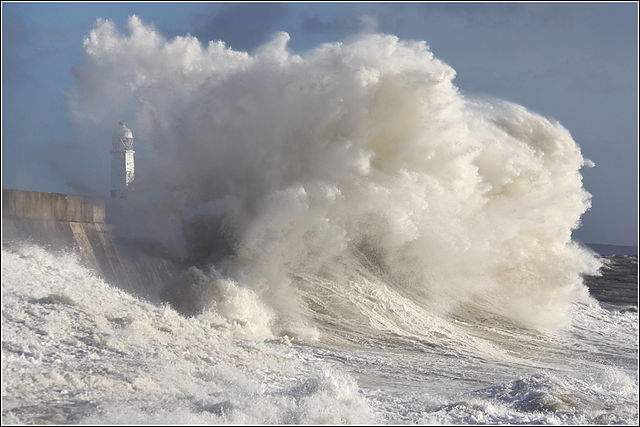Sailing aboard a yacht has become synonymous with luxury and freedom – a personal, intimate way to explore the world’s most secluded corners. However, beneath all the opulence and adventure, the tranquility of open waters can be disrupted by the approach of unpredictable stormy weather. Ensuring the safety of everyone aboard during these times is of paramount significance. In this article, we will explore a comprehensive guide of safety tips for yachts in storms which can be of help for even seasoned sailors.
Onboard, several variables need to be constantly monitored to ensure shipshape navigation. Of these, weather is the most important.
Understanding Weather Conditions
Interpreting weather patterns is a nuanced skill that extends beyond a mere observation of the skies. It requires a comprehensive understanding of the intricate relationships between various atmospheric elements, including sunny skies, cloud formations, wind directions, and impending storms. This mastery becomes particularly crucial for those navigating the open sea, where accurate weather interpretation can be a lifesaving skill. Equipping oneself with the right tools, such as a barometer to measure atmospheric pressure, combined with access to a reliable weather forecast, forms a critical foundation for sailors and mariners, enhancing their ability to anticipate and respond to changing weather conditions effectively.
Appropriate use of Technology
Apart from weather equipment, technology has made sailing safer than ever before. The use of radar, GPS, and depth finders have enabled sailors to navigate their course precisely, even in the most tumultuous seas. However, relying purely on electronic aids can be risky as they are sometimes prone to failure, especially in adverse conditions. Hence, always have a manual backup, such as paper charts, available.
Preparing for the Storm
 Successfully weathering a storm at sea hinges on meticulous preparation, beginning with a comprehensive safety check of the yacht. Ensuring that every crew member is equipped with properly fitted lifejackets or Personal Floatation Devices (PFDs) is a non-negotiable aspect of this preparation. Additionally, securing all loose items both on the deck and below is imperative to prevent injuries resulting from flying objects and to mitigate potential damage to the yacht.
Successfully weathering a storm at sea hinges on meticulous preparation, beginning with a comprehensive safety check of the yacht. Ensuring that every crew member is equipped with properly fitted lifejackets or Personal Floatation Devices (PFDs) is a non-negotiable aspect of this preparation. Additionally, securing all loose items both on the deck and below is imperative to prevent injuries resulting from flying objects and to mitigate potential damage to the yacht.
Safe Navigation
Safe navigation on the open sea involves a meticulous consideration of various factors, including anticipated wind and wave conditions, sea traffic, and proximity to land or shallow waters. When faced with stormy weather, it becomes paramount to adjust navigation strategies by reducing speed to ensure safer maneuverability. Slowing down allows the yacht to ride the waves more effectively, reducing the impact and strain on the vessel’s structure.
Handling the Vessel
It is essential to have a thorough grasp of the yacht and how it behaves under various circumstances, especially in a storm. Maintaining a sea course under such erratic weather is crucial because it enables the boat to skilfully ride the waves while keeping the propeller submerged to avoid instability. Although it may seem contradictory, driving the boat into the storm can provide increased stability and control, avoiding the vessel from tossing about uncontrollably.
Storm Tactics
Using certain storm manoeuvres, such as heaving-to, lying-a-hull, and using sea drogues or anchors, is necessary when navigating through storms. Using these storm methods correctly is essential to keeping the boat stable and reducing the chance that strong waves would overturn it. Furthermore, a critical component of storm management is having the crew stay below deck, with only one experienced sailor on deck to direct and supervise navigation. This methodical strategy uses tactical manoeuvres to manoeuvre through hazardous weather conditions while guaranteeing the crew’s safety.
Training for the Storm
Experience and knowledge truly come to the fore when weathering a storm. Investing in safety at sea (SAS) and sea survival courses provides a practical understanding of safety procedures, use of emergency equipment, and lifesaving techniques. Reading about these procedures in a serene environment versus performing them amidst rolling waves are two totally different experiences.
Mental Preparedness
When caught in a storm, it’s essential to stay calm and focused. Being mentally and physically ready is of equal importance. Encourage crew members to get sufficient rest before a storm as being well-rested will aid in handling the yacht during turbulent conditions.
Safety drills
Regular safety drills will ensure all crew members are familiar with their roles and duties during severe weather situations. These drills increase the chances of successful response during an actual situation.
Survival after the Storm
Remember, the duration immediately following the storm is just as crucial as during the storm. Maintain regular communication with the Coast Guard and other vessels. Implement safety measures and make necessary repairs to ensure continued onboard safety.
Conclusion
The essence is to prepare beforehand. One must gain critical wisdom and experience to ensure that your yacht trip doesn’t become a saga of survival but instead remains the luxurious and adventurous journey it was intended to be. Remember, the safety of everyone on board is of paramount significance, so stay prepared and stay safe.

